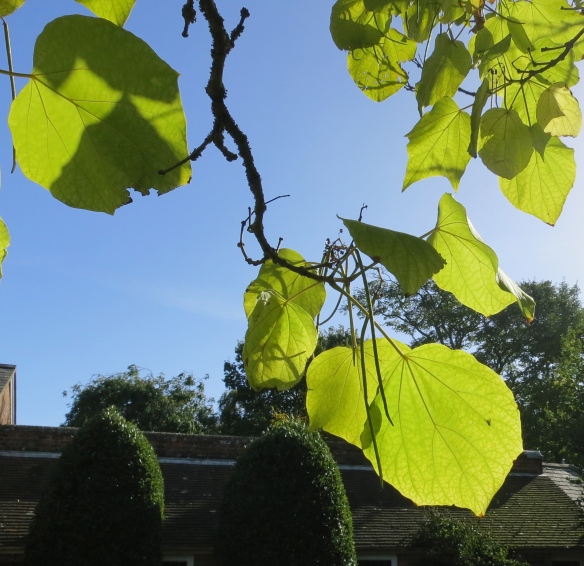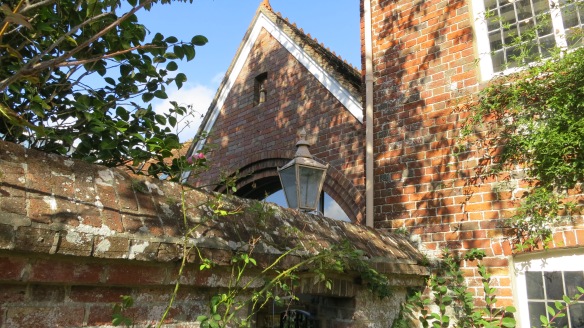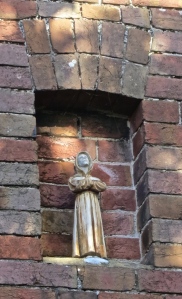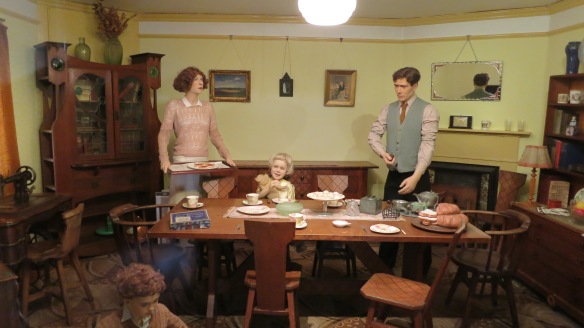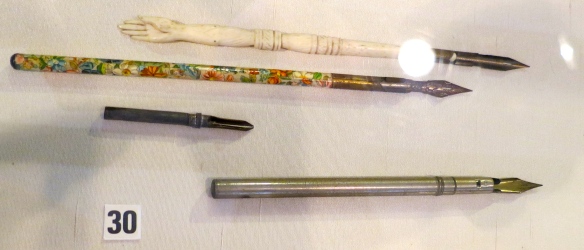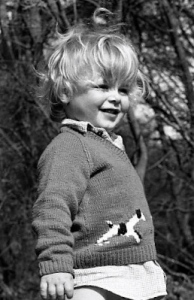


 Today’s weather pattern was similar to yesterday’s. I therefore delved into the archives again and came up with another black and white picture of Sam looking remarkably like his daughter Orlaith, among a collection of shots of still naked trees that must have
Today’s weather pattern was similar to yesterday’s. I therefore delved into the archives again and came up with another black and white picture of Sam looking remarkably like his daughter Orlaith, among a collection of shots of still naked trees that must have 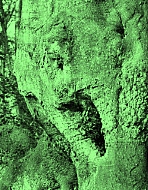 been taken early in 1982 somewhere in Surrey. I love the contorted shapes and the images they sometimes reveal. Study, for example, the last picture above. Can you see the Green Man of legend? He is a mythological figure representing rebirth, and, reproduced in every art form, whether drawing, painting or sculpture, is frequently seen as an architectural symbol or a pub sign. Very often he is painted as if formed from foliage. I have never seen him depicted in bark, which is my excuse for breaking my normal rule and altering an image.
been taken early in 1982 somewhere in Surrey. I love the contorted shapes and the images they sometimes reveal. Study, for example, the last picture above. Can you see the Green Man of legend? He is a mythological figure representing rebirth, and, reproduced in every art form, whether drawing, painting or sculpture, is frequently seen as an architectural symbol or a pub sign. Very often he is painted as if formed from foliage. I have never seen him depicted in bark, which is my excuse for breaking my normal rule and altering an image.
Perhaps the fossilised Picasso-like deer in this shot is easier to spot.
As the day brightened up, I wandered along Hordle Lane as far as the path by the side of Apple Court Garden, and along this until my way was barred by a locked five-barred gate. I then retraced my steps. 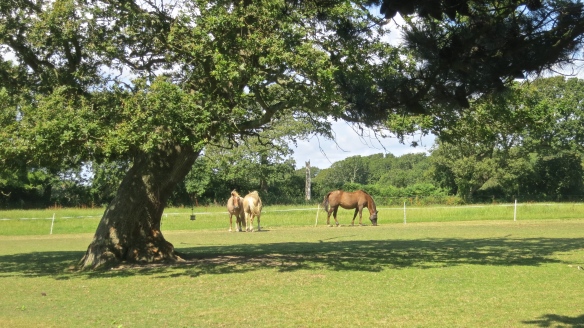 Two of the horses in the paddock still wore their protective
Two of the horses in the paddock still wore their protective  masks, although the day was less fly-blown.
masks, although the day was less fly-blown.

 We now have a delicate little clematis Campaniflora rambling across the plants in the front garden.
We now have a delicate little clematis Campaniflora rambling across the plants in the front garden.
Water lilies are still forcing their way to the light in the tiny pond created in an old water tank.
Among the most fidgety of the butterflies we have is the small white, which, like Tigger, never seems to be able to settle. They are constantly, restlessly, flitting around the garden. I managed, fleetingly, to catch one on a bidens. It didn’t stay long enough to disturb the other two basking insects.
Having noticed that Apple Court were advertising rare and unusual plants, I returned this afternoon with the head gardener to make some purchases. We bought a Persicaria microcephalus Red Dragon; a Hydrangea paniculata Phantom; two Athyriums, one Metallicum, the other dictum Red Beauty; and a Dryopteris erythrosora Brilliance.


 In the sales area Meadow Brown butterflies and bees flocked to the cone flowers. In the garden itself, a magnificent catalpa shed its shaded blooms, vying with the sunlight in dappling the lawn beneath, and Primrose was having her photograph taken.
In the sales area Meadow Brown butterflies and bees flocked to the cone flowers. In the garden itself, a magnificent catalpa shed its shaded blooms, vying with the sunlight in dappling the lawn beneath, and Primrose was having her photograph taken.
Water lilies in the capacious carp ponds had no need to force their way into the sunlight.
When we returned with our spoils, seizing upon the opportunity to contribute to the planting, and, more significantly, to take a break from digging up concrete slabs, I volunteered to dig the holes for the new residents. This turned out to be somewhat unwise. I began with the ferns, which were destined for a comparatively fallow spot where only weeds seemed to be growing. Almost immediately I hit upon large lumps of tufa. Tufa is a porous rock, formed near mineral springs, upon which some hardy plants will grow. It is popular for rockeries and alpines. Maybe a rockery was once intended for this bed.  The large piece on the left of the pile in the picture demonstrates that it is useful on which to grow certain plants. Not ideally those it was harbouring.
The large piece on the left of the pile in the picture demonstrates that it is useful on which to grow certain plants. Not ideally those it was harbouring.  Having dug all this out, the craters left had to be filled with soil scrounged from other parts of the garden. Then we planted our ferns.
Having dug all this out, the craters left had to be filled with soil scrounged from other parts of the garden. Then we planted our ferns.
 The lair allocated for the Red Dragon involved piercing a mixture of clay and gravel. Fortunately for me Jackie did most of it.
The lair allocated for the Red Dragon involved piercing a mixture of clay and gravel. Fortunately for me Jackie did most of it.
 Finally, I only had to negotiate a tree root before setting the Phantom hydrangea standing proud.
Finally, I only had to negotiate a tree root before setting the Phantom hydrangea standing proud.
This evening we again dined on Jackie’s luscious lamb jalfrezi with boiled rice, followed by evap on strawberries on raspberry twirl cheesecake. Jackie drank Hoegaarden and I drank Chateau Chataigniere Bordeaux 2012.


